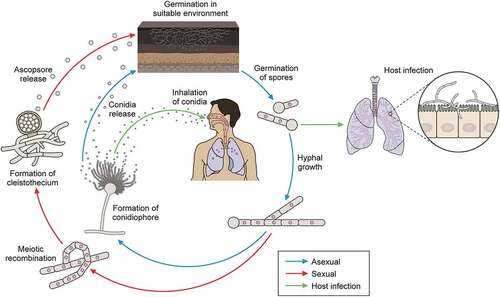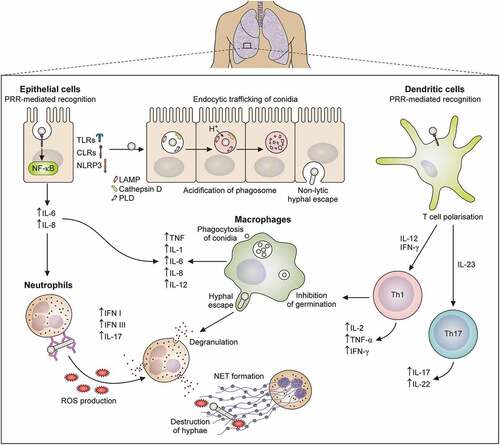Figures & data
Figure 1. A. fumigatus lifecycle both in the environment and a human host. A. fumigatus can enter an asexual (blue) or sexual (red) reproductive cycle. During the sexual cycle, the fungus undergoes meiotic recombination to form the cleistothecium, which contains ascospores. Dead plant matter is an ideal environmental niche for C. fumigatus to sporulate and grow. During the asexual cycle, the mycelium generates spores, which can be aerially dispersed. Some of these conidia land in a new ecological niche, while others are inhaled by humans and can cause disease (green).

Table 1. A selection of A. fumigatus genes and molecules involved in virulence. Representative genes from a range of categories including adherence, thermotolerance, nutrition/metabolism, cell wall integrity, interaction with the host immune system and stress response have been highlighted.
Figure 2. Diagram of innate immune response against Aspergillus fumigatus. This figure schematically represents an overview of the information presented in this review regarding epithelial cell, macrophage, neutrophil, and dendritic cell interactions with A. fumigatus.

